Healthy, strong, snow-white teeth are the dream of every person. However poor nutrition, bad habits, poor hygiene - all this negatively affects dental health. To temporarily hide oral imperfections, dentists use plastic crowns on the front teeth. Many clients have already left reviews about this procedure. Let's take a closer look at these crowns, their advantages and disadvantages, indications for use and customer reviews.
Brief description of plastic crowns
Plastic crowns are usually used by dentists as temporary crowns. But if the client has a difficult financial situation, then they can be used as constants. The plastic ones, which have already been reported by many patients, perfectly imitate natural teeth and are easy to make. But they have much less strength than crowns made from other materials.
These crowns can hide chipped teeth and make your smile more aesthetically pleasing. They are very easy to make, so get rid of external shortcomings teeth can be removed in a short period of time. Plastic crowns on the front teeth can be used as permanent ones. And for chewing teeth they can only be used temporarily because they will not withstand heavy loads.
Advantages of plastic crowns
Plastic crowns have a number of advantages:
- Aesthetic appearance after their installation.
- Affordable price, especially for people with difficult financial situations.
- Possibility of rapid production.
- Temporary protection of front teeth from cold air and harmful bacteria.
Disadvantages of plastic crowns
Despite a number positive qualities, plastic crowns also have disadvantages: 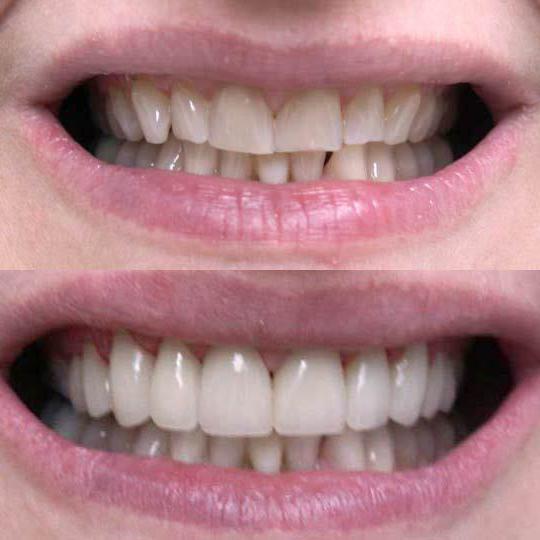
- The color changes. Food and artificial dyes are absorbed into plastic and leave stains.
- The crown may crack under stress.
- Allergies are possible, as the material contains various compounds that can provoke an allergic reaction.
- Plastic has a porous structure, so bacteria can accumulate in it. The patient should take more careful care of his teeth and crowns.
- Plastic crowns wear out quickly, so they cannot be used for a long time.
- Sharp edges of the crown can injure soft tissues.
Plastic crowns: indications for use
- If there are minor defects front teeth ( irregular shape, size or shade of enamel), plastic crowns will help maintain aesthetic appearance.
- To maintain the ability to chew.
- If you need to protect the ground tooth from exposure to cold and bacteria before a permanent structure is installed.
- To prevent infection of the gum bed.
- If it is necessary to cover the implants while the permanent crown is being fabricated and placed.
- To prevent the dentition from shifting;
- In case of periodontal disease, when necessary
- To restore normal diction.
Contraindications for use
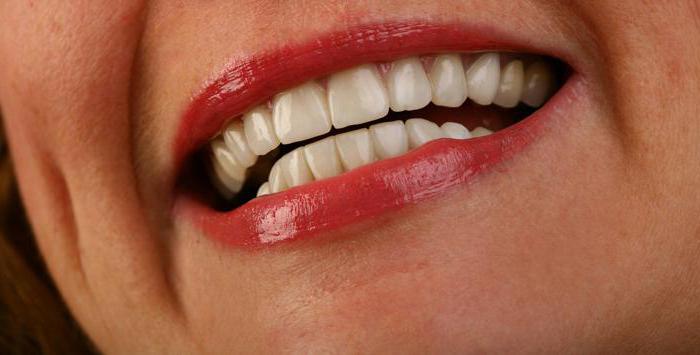
Plastic crowns, photos of which will be posted below, are not recommended for use in the following cases:
- If the patient is allergic to polymer compounds.
- If the patient has a psychiatric diagnosis.
- Having a deep bite.
- If the patient has bruxism
It should also be noted that plastic crowns should not be placed on children either.
The process of installing a plastic crown
A plastic crown can be made in a laboratory or doctor's office. If the doctor makes it himself, then such a crown will most likely be temporary and can be worn for no longer than one month. First, the doctor must make an impression of the tooth using a plastic mass. After this, the tooth is ground down. In those that have one root, it is necessary to remove the nerves and seal the canals. It is better to leave the nerves in the chewing teeth, therefore, when treating them, they use an anesthetic drug. A special powder must be added to the resulting impression. Then you need to put it on the tooth and remove it when the mass hardens. The crown needs to be ground and polished. You also need to use fixing cement for fixation. 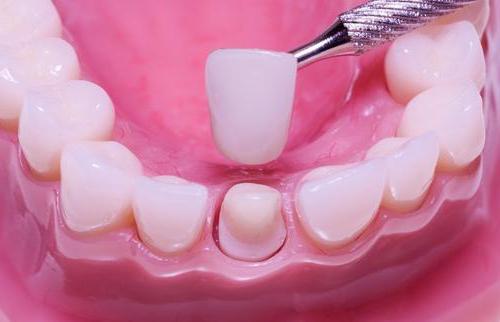
If a plastic crown is used as a permanent crown, it can be made on a metal base. This way it will be stronger. Such a crown is covered with plastic on top, and if something falls off, it can be easily restored. A permanent plastic crown can be used for 3 years, and a metal-based crown can be used for 5 years. If it is not changed in time, it can harm the entire oral cavity.
How is a plastic crown removed?
To remove such a crown from a tooth, you first need to use ultrasound. Thanks to it, the effect of cement is weakened. The doctor then uses the Kopp apparatus. Using a pushing motion, the crown is slowly removed from the tooth. He himself remains undamaged. After this, you need to remove the cement particles from the tooth. The patient does not feel pain during the procedure.
Cost of a plastic crown
As for the price of such a crown, it depends on many factors. Professional level of specialists, clinics, size of work. If a plastic crown is used as a temporary one and made directly in the doctor’s office, then it will cost from 1000 rubles. The same temporary crown, but made in a laboratory, will cost from 4,000 rubles. If a plastic crown is used as a permanent crown, its price will be from 5,500 rubles. And if it is made using a metal base, it can cost up to 6,500 rubles. 
Plastic crowns: reviews
Using plastic crowns is quite common occurrence. Many people have tried this procedure on themselves and left their comments. Reviews are quite contradictory. Some people are pleased that the plastic is very light and does not weigh down the tooth. In addition, many patients note a fairly low price compared to other crowns. Regarding negative reviews, then many people complain that such crowns are very difficult to clean, they quickly attract various stains. You need to limit yourself strong tea, coffee, many fruits. Patients are also not very happy with the temporary effect of a plastic crown. It needs to be looked after very carefully and changed from time to time. But some people claim that plastic crowns have saved them from some problems, such as darkening of the natural tooth and gum disease. Such crowns are best used to eliminate external dental defects, but not for treatment. As mentioned above, the reviews are quite contradictory. Therefore, the decision on whether to use such crowns or not is entirely up to you. 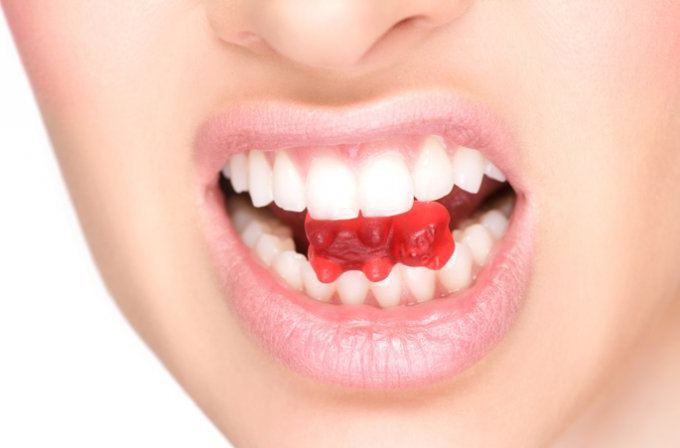
In conclusion, I would like to add that before using this type of crown, consult your doctor and take a test for allergic reactions. These crowns will help you hide small defects in your front teeth and make your smile more attractive.
Take care of your teeth, eat right, avoid bad habits, and your smile will always be open and charming!
Everyone will tell you that dental treatment, especially when it comes to prosthetics and surgical recovery functions and aesthetics of the dentition is a rather expensive procedure. Therefore, we are all the more pleased to offer you an effective, but at the same time inexpensive technique - plastic crowns.
Their price is significantly lower than the cost of metal-ceramic and metal systems. At the same time they provide good quality, wearability, long term service and comfort.
Plastic dentures – Prices
Plastic dentures - Doctors
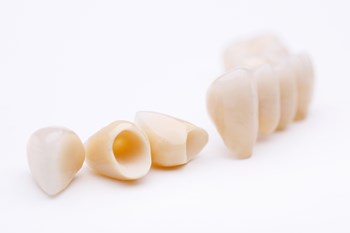 Dental crowns made of plastic are a good compromise between efficiency and price in cases where there is a need to save money.
Dental crowns made of plastic are a good compromise between efficiency and price in cases where there is a need to save money.
Plastic dental crowns: pros and cons
The fact that plastic as a material is much more vulnerable than metal, zirconium and ceramic alloys is an obvious and long-known fact. But this does not mean that crowns made from it cannot be relied upon. Their impeccable service life is at least 3-5 years. Moreover, in the first years, in terms of their aesthetic qualities, they will not be significantly inferior to expensive analogues. In addition, unlike metal and ceramic, plastic crowns require much less time to produce. Taking an impression, making a mold and fitting - all this can be done in one visit to our clinic.
Interestingly, despite all the limited characteristics of plastic crowns, they have their own unique scope of application. What is usually regarded as a disadvantage in some circumstances turns into a virtue in others. In multi-stage prosthetics, it is plastic crowns that are installed for initial stage. They can literally be made in minutes, install quickly, last as long as they're supposed to, and provide good function and good looks.
Temporary plastic crowns are an indispensable weapon for dentists in treatments that require long period production of bridges or prostheses, as well as in cases of delayed implantation.
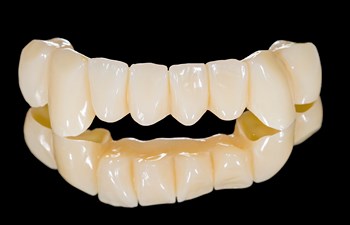
Temporary crowns on teeth allow you to lead a normal lifestyle, practically without limiting yourself in anything, while the aesthetics and functions of the teeth will be completely preserved when using this technique.
Plastic dentures: before and after photos
 |
 |
 |
Price for plastic crowns
Low cost of the material itself, simplicity and speed of production, versatility - these are the clear advantages of plastic crowns. Their low price allows you to save on full-fledged orthodontic treatment, and get results literally in one doctor’s visit. If you have any questions or would like to know more about what is included in the cost of placing plastic crowns, please call any of our branches and schedule a free initial consultation.
For the production of prosthetics, a wide variety of materials and technologies are used, the cost of which varies significantly. However, plastic is still used to make artificial teeth. This material is the most popular and in demand due to its low cost. People of any income level can afford plastic dentures.
Dentures are a very common procedure, as natural teeth tend to decay over the years. Negative influence on the teeth various diseases and injuries.
Types of plastic dentures
Dental dentures have been made from plastic for a long time. Today, there are two technologies for their production: pressed and injection methods. Each of them has its own characteristics. These methods are used under certain conditions.
Pressed and cast prostheses
With compression pressing, you can get the product quite quickly without extra costs. At the same time, the quality of the products leaves much to be desired.
Due to the individual characteristics of the oral cavity, a prosthesis obtained by pressing cannot reproduce all the smallest details of the jaw. The time it takes to get used to such a product increases significantly. Accordingly, the interval for using pressed dentures is reduced.
The injection molding method for the production of dentures makes it possible to create an ideal combination of the product with the jaws and gums. In this case, you can achieve maximum resemblance to natural teeth. Such products can be used for both full and partial replacement of natural teeth.
Removable and partially removable plastic dentures
In addition to division by production method, plastic products are classified by design. There is a division into removable and partially removable designs. In addition, dentures can be used both permanently and temporarily.
Removable structures are most in demand when complete loss natural teeth. During the production process, a special plastic called acrylic is used. To attach the product to the oral cavity, special suction cups are used to securely fix the prosthesis on the gums.
Partially removable structures are in demand when several teeth are missing. As a rule, such a solution is used as a temporary solution to preserve chewing function before installation of implants. A similar decision is made when it is required long-term treatment patient. Partial dentures will help provide a temporary solution for this period.
In addition to plastic products, there are other options for prostheses. As an example, we can consider metal-plastic products. The base of such products is metal, and the coating is made of composite plastic.
Advantages of plastic dentures
Plastic prostheses have always been considered the simplest and most affordable designs. No special skills are needed to make and use them. Demand and popularity plastic structures due to the following positive aspects:
- Plastic has excellent aesthetic characteristics. Its color and shape can be selected in the same range as internal tissues oral cavity. Typically, such dentures are not much different from natural teeth.
- The human body can easily adapt to plastic products. The contact of the gums and mucous membrane with the dentures occurs without irritation. The enamel surface of existing teeth is not subject to destruction.
- The cost of prostheses is at an affordable level, which is one of the main advantages of plastic. Almost any patient can purchase such a product.
- The efficiency of production makes it possible to use prostheses as a temporary solution for the period of treatment or the production of a more expensive product. The production time for metal ceramics can reach several weeks. Therefore, wearing temporary plastic prostheses is the best way out of this situation.
- The plastic product has a modest weight. Therefore, such dentures are recommended in cases where it is necessary to reduce the load on the patient’s jaw and gums.
Popularity plastic prostheses is still high - this is explained by the fact that it is better to have a low-quality denture than a mouth without teeth.
Disadvantages of plastic prostheses
Despite obvious advantages, plastic dentures are very often replaced with more expensive products. This is due to the following disadvantages of plastic structures:
- The internal structure of the plastic does not have the necessary hardness and rigidity, so it quickly becomes unusable and requires replacement.
- After a certain time interval, the product deforms. The prosthesis changes its shape, which negatively affects the comfort of wearing it, and also leads to irritation of the surface of the mouth.
- The product requires careful care. Otherwise, the period of its use is significantly reduced.
- Despite careful selection of the product, especially those produced by injection molding, the prosthesis is not fixed tightly enough in the mouth. As a result, food debris gets underneath it, causing irritation and discomfort.
- Even if all care requirements are met, the product retains its attractive appearance for no more than three years. After this, not only its characteristics deteriorate, but also its shade. Patients do not really like such changes.
- The structure of the prosthesis is quite porous. As a result, plaque appears in the oral cavity, which is very difficult to remove.
- Plastic surgery is not suitable for all patients. In some cases, it may cause allergic reactions.
- The thickness of the crown is quite large. Therefore, when installing a prosthesis, some of the natural teeth also suffer.
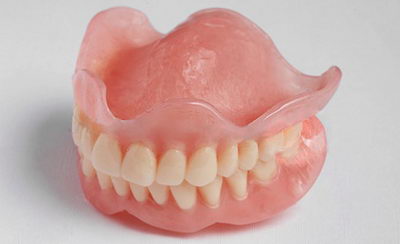
Indications and contraindications for installation
There are no significant restrictions for the installation of plastic dentures, both temporary and permanent. However, you must first contact your dentist. Indications for the use of plastic dentures on teeth are as follows:
- Temporary installation for the period between grinding of natural teeth and installation permanent crowns. Since the process of making a permanent prosthesis requires a certain time interval, installing a plastic product will make it possible to protect the oral cavity from external and internal influences.
- Any disturbances in the function of chewing food are also grounds for installing a plastic denture.
- The product can replace natural teeth lost due to illness or injury.
- Dental diseases are corrected by installing dentures.
- Loss of the natural color of teeth or their irregular shape can be eliminated with the help of plastic dentures.
Although the scope of application of the products in question is extremely wide, there are some situations in which the use of plastic is undesirable or unacceptable.
- Such prostheses should not be placed on patients aged 16 to 18 years.
- In some cases individual characteristics the body does not allow the installation of plastic crowns. In this case, it is necessary to use dentures made of a different material.
- and are also a powerful argument against plastic prostheses.
- If you have diseases such as caries or tartar, as well as inflammation of the oral cavity, you must first undergo a course of treatment and cleaning, and then install a prosthesis.
- Installation of products is prohibited if you have mental illness.
Service life of plastic dentures
Plastic by its structure is not a durable material. Plastic dentures retain their original characteristics for 2.5; less than 3 years. After this interval, the product begins to deform, so it needs to be replaced with a new one.
In some cases, the installation of plastic crowns made on a metal frame is used. The service life of such prostheses extends to 5 years. This is possible thanks to timely diagnosis and repair of prostheses. A new layer of plastic is applied to the old, already cracked layer of plastic. This procedure is performed by many dentists, and it takes no more than 2-3 hours.
When using plastic products, the owner must constantly monitor their condition and consult a doctor at the first sign of discomfort or damage to the prosthesis. The reason for replacement may be a change in the design of the product, the appearance of pain symptoms, deterioration of the bite, as well as mechanical damage and plastic breakage.
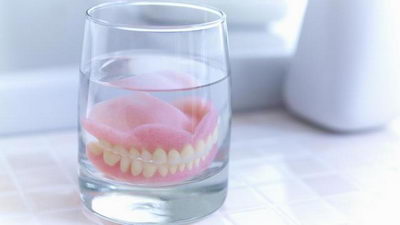
It is unacceptable to try to restore the structure to its previous appearance on your own, since restoration of the product can only be done with polymerization. Therefore, any activities with a plastic structure must be performed by a dentist.
You can increase the service life of the prosthesis yourself. In this case, it is necessary to carefully follow the doctor’s recommendations. First of all, you need to pay attention to preparing the oral cavity for installation of the product. All diseases of the teeth and oral tissues must be cured. .
Caring for plastic dentures
After installing plastic products, they must be cleaned daily using low-abrasive pastes and powders. Your dentist will help you choose the type and name of cleaning materials.
After each meal, you need to rinse your mouth, and also rinse the denture if it is removable. Such measures will help keep your mouth clean and reduce the risk of diseases and inflammations. An additional advantage there will be no unpleasant odor.
You should periodically visit a dentist who will check the safety of the prosthesis and give necessary recommendations. If destructive changes appear, the doctor will help eliminate them or replace the product in a timely manner.
Price of plastic dentures
The cost of plastic products is noticeably lower than similar prostheses made from more modern materials. At the same time, the price for production and installation varies depending on the location of the clinic, the qualifications of the dentist, and the amount of work.
- In average clinics located outside metropolitan areas, installation of a temporary prosthesis can cost about $15.
- The same product produced in a laboratory will cost at least $60.
- When using screw fastening technology, the amount will increase to $90.
- Iron backing will increase the cost to $100
It should be noted that the cost of similar prosthetics in Moscow is much higher:
- For removable denture you will have to pay from $200 to $230. At the same time, there is no particular difference in the cost of a partially and completely removable structure.
- The price for a plastic prosthesis for 2-3 teeth will be $60.
Plastic products are proven and reliable prostheses for everyday and temporary use. They have become in demand due to their low cost, ease of production and the ability to change them when necessary.
Plastic crowns are placed quite quickly. The temporary restoration is essentially made right in the patient's mouth. In fact, the installation of plastic crowns can take as little as one day.
Stage 1 - tooth preparation
The tooth is ground down, if necessary, depulped and strengthened with a pin or a special stump, after which impressions are made and plastic crowns are installed. To do this, polymer-based powder is poured into a plaster mold and a special liquid is added.
Stage 2 - turning and grinding the crown
The mold is then placed on the prepared tooth: after the material has hardened, the plastic dental crown is sharpened and polished so that the patient does not experience inconvenience and discomfort.
Stage 3 - installation of plastic crowns
After completion of the processing and adjustment stage, the plastic crown is fixed using special cement. When the time comes to install a permanent structure, the doctor removes the temporary crown special tool: To reduce the risk of injury, ultrasound is often used to destroy cement.
The installation of plastic crowns with a metal base is exactly the same as that of metal-ceramic and ceramic products. In this case, the prosthesis is permanent, so cast crown with a plastic veneer is made in a dental laboratory on average within 1 - 2 weeks, and the patient wears a temporary plastic crown during this time.
Plastic crowns on implants
Plastic crowns on implants are usually installed during one-stage implantation. In this case, the implant is not sutured into the gum, as with classical technique: A temporary plastic crown is placed immediately after the completion of the surgical stage. Regardless of the treatment method, before placing a plastic crown, the doctor selects the color of the structure, focusing on the Vita scale: despite the fact that the crown is temporary, it should not differ much from natural teeth.
Pros and cons of plastic crowns
Plastic crowns have a number of advantages and disadvantages, but the negative aspects are most often associated with long-term wearing of such structures, because they are not originally intended for long-term use.
| Pros | Cons |
+ Good functionalityProsthetics with plastic crowns help solve the main problem - to protect the prepared tooth from impact external environment, as well as restore the ability to chew food and eat normally. However, it is not recommended to consume solid foods. + Acceptable aestheticsOf course, when it comes to the beauty of a smile, you can’t compare plastic and porcelain crowns, but a temporary plastic structure can also look very natural. + Low priceThe prices for installing plastic crowns are much lower than for crowns made from any other materials. |
– Short service lifeProducts with a metal frame will last longer, but over time the plastic layer needs to be changed, because it is almost impossible to bleach a plastic crown. – Disadvantages of the materialPlastic has a porous structure, so it attracts pathogenic bacteria. In addition, plastic crowns absorb odors and are prone to staining, so hygiene must be carried out especially carefully. – AllergiesIndividual patient allergic reactions to plastic are possible. |
Plastic and porcelain crowns - which is better?
It makes no sense to compare plastic and porcelain crowns in terms of quality, durability and aesthetics, since porcelain crowns win by a wide margin in all these indicators. On the other hand, porcelain crowns are not installed as a temporary prosthesis: plastic crowns perform this function. If you cannot afford a porcelain crown for financial reasons, we recommend using metal-ceramic crowns, since plastic crowns are not initially designed for a long service life.
Plastic crowns - price in Moscow
In dentistry, a plastic crown is considered one of the most budget-friendly designs. The price of a plastic crown per tooth starts from 1,000 rubles - this is exactly how much you need to pay for a simple temporary structure. The cost of a plastic crown on a metal base can reach 5,000 - 6,000 rubles: the total amount depends on the manufacturing method and the level of the clinic itself. It should be understood that a plastic crown in most cases is part of orthopedic treatment, so the main costs are associated with the manufacture of a permanent prosthesis and associated manipulations.
Much attention is paid to medicine: techniques are being improved, new materials and approaches to solving problems are being used. Particularly popular is the implantation of implants into the bone, photopolymer restoration and whitening using high-tech methods. But this does not mean that they are no longer manufactured. Acrylic dentures are used today to temporarily replace a defect, and in some situations they are used on a permanent basis.
Peculiarities
It requires painstaking work of the dentist and technician, whose skills and knowledge directly affect the quality of the future orthopedic design. Patients often ask the question: “How long do plastic dentures last?” It is impossible to answer unequivocally, because the situation in the oral cavity of each person is individual: one wears the product for 5 years, another – 10, the third – 20. This depends on the rate of gum atrophy and the reliability of the prosthesis.
Doctors advise using plastic to temporarily replace dental defects, but it is important for the patient to know the features of prosthetics with this material:
- artificial teeth are selected in accordance with the shape of a person’s face;
- usually does not require additional grinding in the oral cavity;
- You can restore either 1 tooth or the entire jaw;
- you can't count on long wearing plastic products;
- the rate of gum atrophy under a removable structure increases due to constant pressure;
- The product requires careful care.
Species
A variety of dental techniques allows you to replace any defect in the oral cavity. Some of them are used as permanent structures, others as temporary solutions. What types of plastic prostheses exist and when is their use advisable? Doctors classify products according to their purpose and method of attachment:
- Partial removable.
- Fixed.
They are in demand by older people, who often do not have chewing organs at all. The quality of such a product directly affects a person’s ability to chew food and speak normally. A design of this type requires proper consideration of all active forces in the oral cavity, ignoring which leads to instability of the prosthesis and its constant discarding. A competent approach in this case is the key to successful orthopedic care. For this purpose, specific stages of manufacturing a complete removable denture have been developed:
- The doctor carefully analyzes the situation in the oral cavity and probes the mucous membrane.
- An anatomical impression is taken and sent to the dental laboratory.
- A model is cast, a bite template and a custom tray are made.
- A functional impression is taken, taking into account the movement of muscles and cords on the jaw.
- The master model is cast.
- Acrylic teeth are placed in a wax base, after which the structure is tried on in the oral cavity.
- If the patient and doctor are satisfied with the current option, then the wax is replaced with plastic.
- Sanded and polished.
- The dentist adjusts the product in the oral cavity.
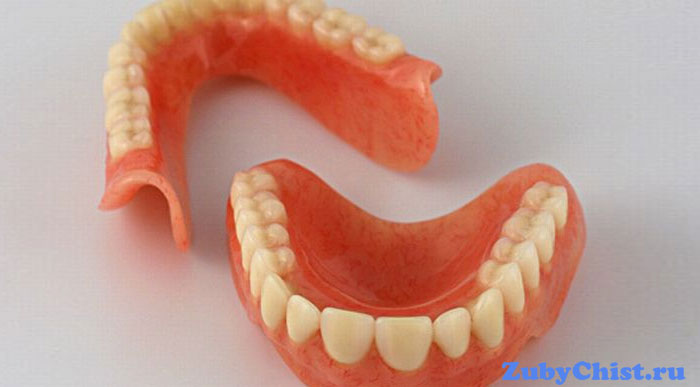
Partial
This design is used to replace a defect in any part of the oral cavity, and the technique is almost identical to full prosthetics. However, sometimes an individual spoon is not needed at all, and there is no need to focus on the transitional fold, because the product is held in place by clasps. The production of a partial view sometimes requires the fixation of artificial crowns to the abutment teeth to better express the vestibular surface and eliminate severe inclination.
Fixed
Gained widespread popularity as a temporary solution. fixed structures(plastic bridges and single crowns), which are often installed during the period of adaptation to implants or before the manufacture of a more durable product. Plastic teeth last up to 2-3 years, but cases of wearing the structure for over 10 years have been recorded, which primarily indicates the skill of the dental technician and the patient’s careful attitude towards the prosthesis.
What materials are used?
Plastic for composition, characteristics and purpose. A fixed product requires the use of material in the color scheme of natural teeth. In addition, such a design must be durable and reliable, although it is not intended to be used beyond its term. Plate dentures are made from a red-colored base plastic into which factory-made acrylic teeth are welded the desired shape, size and color.
In recent decades, dentists have been offering patients removable structures made using injection molding technology from nylon and acetal. Although products of this type have high performance strength, but the price for them sometimes goes through the roof. However, the variety of options only helps to improve the quality of orthopedic care.
Pros and cons
Making dentures is a labor-intensive and very responsible task. The further use of the structure in the oral cavity and the health of the patient depend on the quality of work. Experienced experts highlight the following advantages of plastic products:
- low cost;
- aesthetic appearance;
- easy to correct;
- used both temporarily and permanently;
- repair any defect.
Plastic is a very convenient material, but don't expect too much.
To avoid problems in the future, the patient needs to know about the disadvantages of such prosthetics:
- plastic changes color over time;
- absorbs odors;
- sometimes causes allergies;
- gums atrophy faster;
- food gets under the prosthesis;
- it is difficult to ensure good stability.
Caring for plastic dentures must be done carefully and regularly. Severe contamination of the product will lead to unpleasant smell from the mouth, which is problematic and sometimes impossible to get rid of - a complete redesign of the structure will be required.





